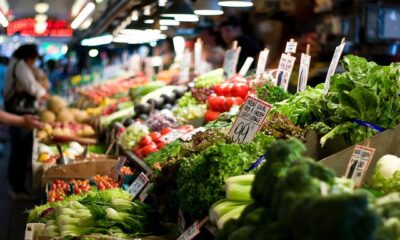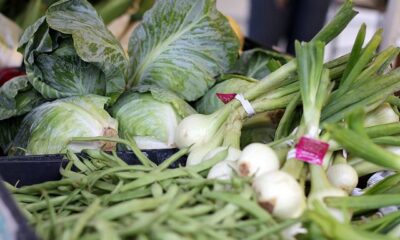Environment
Staying Lean While Still Being Green – The Locavore Diet
With the increasing awareness of ongoing environmental concerns and challenges, the world is turning its attention to ways in which to minimize adverse environmental effects. While industrial factories begin to adjust their processes, a new and local movement has started – The Locavore Diet.
A locavore is somebody who changes their eating plan and lifestyle to consume solely produce which has been grown locally, with the widely accepted definition of locally being within 100 miles.
The movement focuses on two main factors; the increase in soil and food quality with the reduction of currently used pesticides and pollutants, and the reduction of CO2 emissions associated with transporting foods over long distances.
Soil and Food Quality
The primary focus placed on soil and food quality by the locavore movement revolves around a farming practice known as ‘Crop Rotation.’ Farmers who grow their produce using this technique rotate the location of each crop after harvest. For a broad example, once a farmer completed a harvest of carrots, the next planting will occur on an adjacent portion of the farmers land with a crop of potatoes planted in the previously used portion. The idea behind this process is to reduce soil erosion and increase the nutrients inside each harvested crop.
The health benefits are very much present in this process also. As an example, the root of a legume contain a bacteria which, when absorbed into the soil, can benefit the growth and nutritional benefits of the next crop planted. Locavores who are utilizing weight loss services in Austin often find that food grown using this process can help them in their goals as it contains fewer contaminants and includes an increased level of nutrients.
CO2 Emissions
With very few alternate and viable means of long-haul transport, large market farmers and supermarkets utilize an extensive network of trucks to collect and deliver their produce. While, over time, this system has become streamlined, a locavore considers the CO2 emissions seen with the use of this method to be too high of an environmental impact. Instead, a locavore will source their produce from a farmer, whether they be a large market or a small business, within a 100-mile diameter of their home.
While the movement may seem small, its penetration is growing. Alongside growing awareness throughout local farmers markets, national advocacy groups are seeing large inroads within their local councils as they push for increases in the presence of locally grown food in supermarkets and the consideration for subsidies for those supermarkets who increase their purchase of such produce.


 Features10 months ago
Features10 months agoWhat is the Eco-Friendliest Option to Wash Your Dishes?

 Environment12 months ago
Environment12 months agoBuilding a Career in Green Construction: Tips and Insights

 News11 months ago
News11 months ago5 Ways Fleet Maintenance Software Can Help Businesses Be More Eco-Friendly

 Features10 months ago
Features10 months agoAddressing Pressing Ethical Concerns with Crypto Exchanges























